Fatigue Assessment by Blink Detected with Attachable Optical Sensors of Dye-Sensitized Photovoltaic Cells
Abstract
:1. Introduction
2. Materials and Methods
2.1. Blink Detection System
2.2. Fatigue Assessment Experiments
3. Results
3.1. Optimal Position of the Blink Detection System
3.2. Fatigue Assessment Experiments
3.2.1. Subjective Fatigue Symptoms
3.2.2. HRV
3.2.3. Blinks
4. Discussion
5. Conclusions
Supplementary Materials
Author Contributions
Funding
Conflicts of Interest
References
- Sloan, R.P.; Shapiro, P.A.; Bagiella, E.; Boni, S.M.; Paik, M.; Bigger, J.T., Jr.; Steinman, R.C.; Gorman, J.M. Effect of mental stress throught the day on cardiac autonomic control. Biol. Psychol. 1994, 37, 89–99. [Google Scholar] [CrossRef]
- Kim, H.G.; Cheon, E.J.; Bai, D.S.; Lee, Y.H.; Koo, B.H. Stress and Heart Rate Variability: A meta-analysis and review of the literature. Psychiatry Investig. 2018, 15, 235–245. [Google Scholar] [CrossRef] [PubMed]
- Tanaka, M.; Ishii, A.; Watanabe, Y. Effects of mental fatigue on brain activity and cognitive performance: A magnetoencephalography study. Anat. Physiol. 2015, s4, 1–5. [Google Scholar] [CrossRef]
- Shimizu, N.; Saito, T.; Hukumoto, K. Research of the mental fatigue reduction effect color-light environment control. Res. Rep. Nagaoka Univ. Technol. 2003, 25, 87–91. [Google Scholar]
- Kudo, Y.; Arai, M.; Miki, N. Fatigue assessment by electroencephalogram measured with candle-like dry microneedle electrodes. Micro Nano Lett. 2017, 12, 545–549. [Google Scholar] [CrossRef]
- Ray, W.J.; Cole, H.W. EEG alpha activity reflects attentional demands, and beta activity reflects emotional and cognitive processes. Science 1985, 228, 750–752. [Google Scholar] [CrossRef] [PubMed]
- Craig, A.; Tran, Y.; Wijesuriya, N.; Nguyen, H. Regional brain wave activity changes associated with fatigue. Psychophysiology 2012, 49, 574–582. [Google Scholar] [CrossRef] [PubMed]
- Grandjean, E. Fatigue in industry. Br. J. Ind. Med. 1979, 36, 75–186. [Google Scholar] [CrossRef]
- Lal, S.K.L.; Craig, A. A critical review of the psychophysiology of driver fatigue. Biol. Psychol. 2001, 55, 173–194. [Google Scholar] [CrossRef]
- Jap, B.T.; Lal, S.; Fischer, P.; Bekiaris, E. Using EEG spectral components to assess algorithms for detecting fatigue. Expert Syst. Appl. 2009, 36, 2352–2359. [Google Scholar] [CrossRef]
- Alghowinem, S.; Goecke, R.; Wagner, M.; Parker, G.; Breakspear, M. Eye movement analysis for depression detection. In Proceedings of the 20th IEEE International Conference on Image Processing (ICIP), Melborne, Australia, 15–18 September 2013; pp. 4220–4224. [Google Scholar]
- Lee, B.G.; Jung, S.J.; Chung, W.Y. Real-time physicological and vision monitoring of vehicle driver for non-intrusive drowsiness detection. IET Commun. 2011 5, 2461–2469.
- Hess, E.H. Attitude and pupil size. Sci. Am. 1965, 212, 46–54. [Google Scholar] [CrossRef] [PubMed]
- Sampei, K.; Ogawa, M.; Torres, C.C.C.; Sato, M.; Miki, N. Mental Fatigue Monitoring Using a wearable transparent eye detection system. Micromachines 2016, 7, 20. [Google Scholar] [CrossRef]
- Horiuchi, R.; Ogasawara, T.; Miki, N. Fatigue evaluation by detecting blink behavior using eyeglass-shaped optical sensor system. Micro Nano Lett. 2017, 12, 554–559. [Google Scholar] [CrossRef]
- Shigeoka, T.; Ninomiya, T.; Muro, T.; Miki, N. Wearable pupil position detection system utilizing dye-sensitized photovoltaic devices. Sens. Actuators A Phys. 2008, 145–146, 103–108. [Google Scholar] [CrossRef]
- Ozawa, M.; Sampei, K.; Torres, C.C.C.; Ogawa, M.; Oikawa, A.; Miki, N. Wearable line-of-sight detection system using micro-fabricated transparent optical sensors on eyeglasses. Sens. Actuators A Phys. 2014, 205, 208–214. [Google Scholar] [CrossRef] [Green Version]
- Torres, C.C.C.; Sampei, K.; Ogawa, M.; Ozawa, M.; Miki, N. Crosstalk analysis, its effects and reduction techniques among photovoltaic devices used as transparent optical sensors for a wearable line-of-sight detection system. Jpn. J. Appl. Phys. 2015, 54, 06FP16. [Google Scholar] [CrossRef]
- Sugimoto, K.; Kanai, A.; Shoji, N. The effectiveness of the Uchida-Kraepelin test for psychological stress: An analysis of plasma and salivary stress substances. BioPsychoSoc. Med. 2009, 3, 5. [Google Scholar] [CrossRef] [PubMed]
- Kubo, T.; Tachi, N.; Takeyama, H.; Ebara, T.; Inoue, T.; Takanishi, T.; Arakomo, Y.; Murasaki, G.I.; Itani, T. Characteristic patterns of fatigue feelings on four simulated consecutive night shifts by “Jikaku-sho shirabe”. Sangyo Eiseigaku Zasshi 2008, 50, 133–144. (In Japanese) [Google Scholar] [PubMed]
- Kubo, T.; Takahashi, M.; Sato, T.; Sasaki, T.; Oka, T.; Iwasaki, K. Weekend sleep intervention for workers with habitually short sleep periods. Scand. J. Work Environ. Health 2011, 37, 418–426. [Google Scholar] [CrossRef] [PubMed] [Green Version]
- Sasaki, T.; Matsumoto, S. Actual conditions of work, fatigue and sleep in non-employed, home-based female information technology workers with preschool children. Ind. Health 2005, 43, 142–150. [Google Scholar] [CrossRef] [PubMed]
- Tanaka, Y. Arousal level and blink activity. Jpn. J. Psychol. 1999, 70, 1–8. (In Japanese) [Google Scholar] [CrossRef]



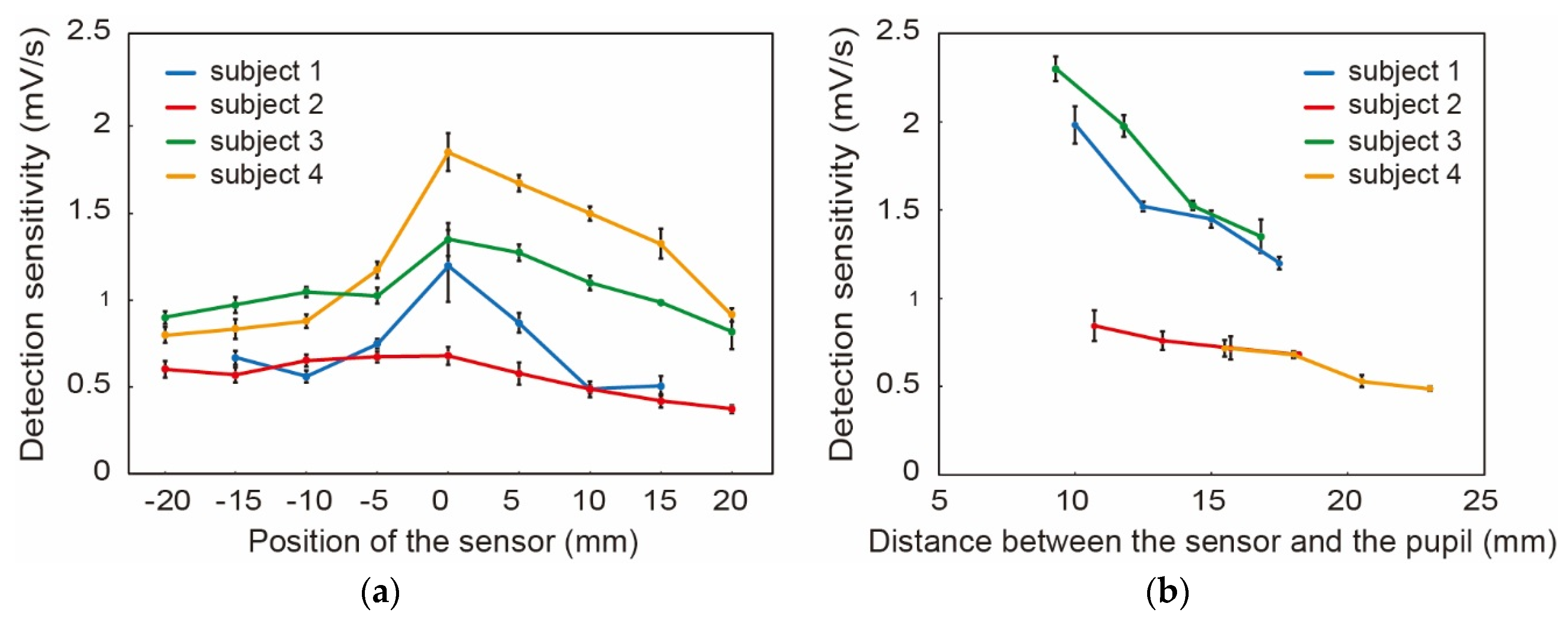
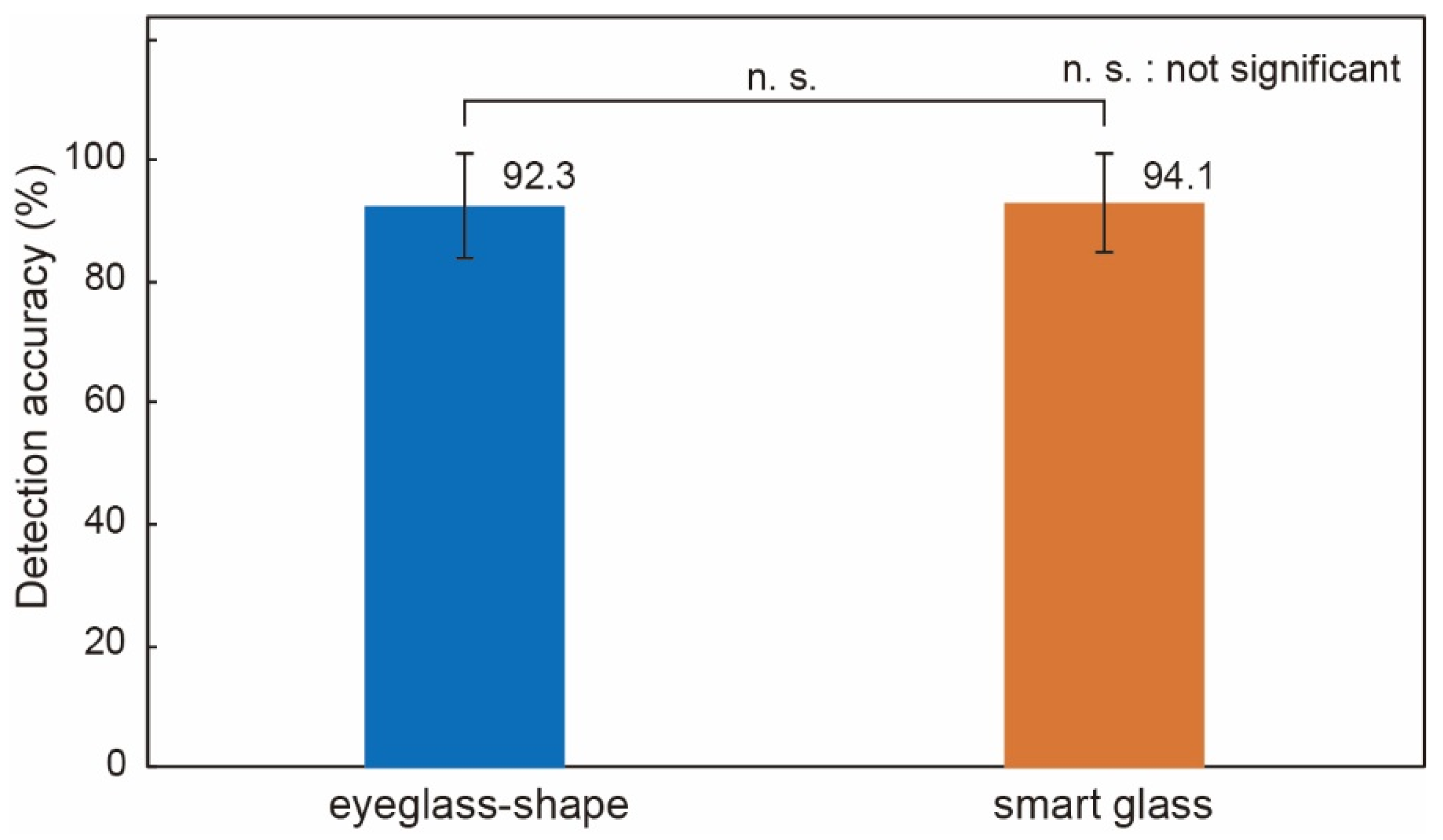

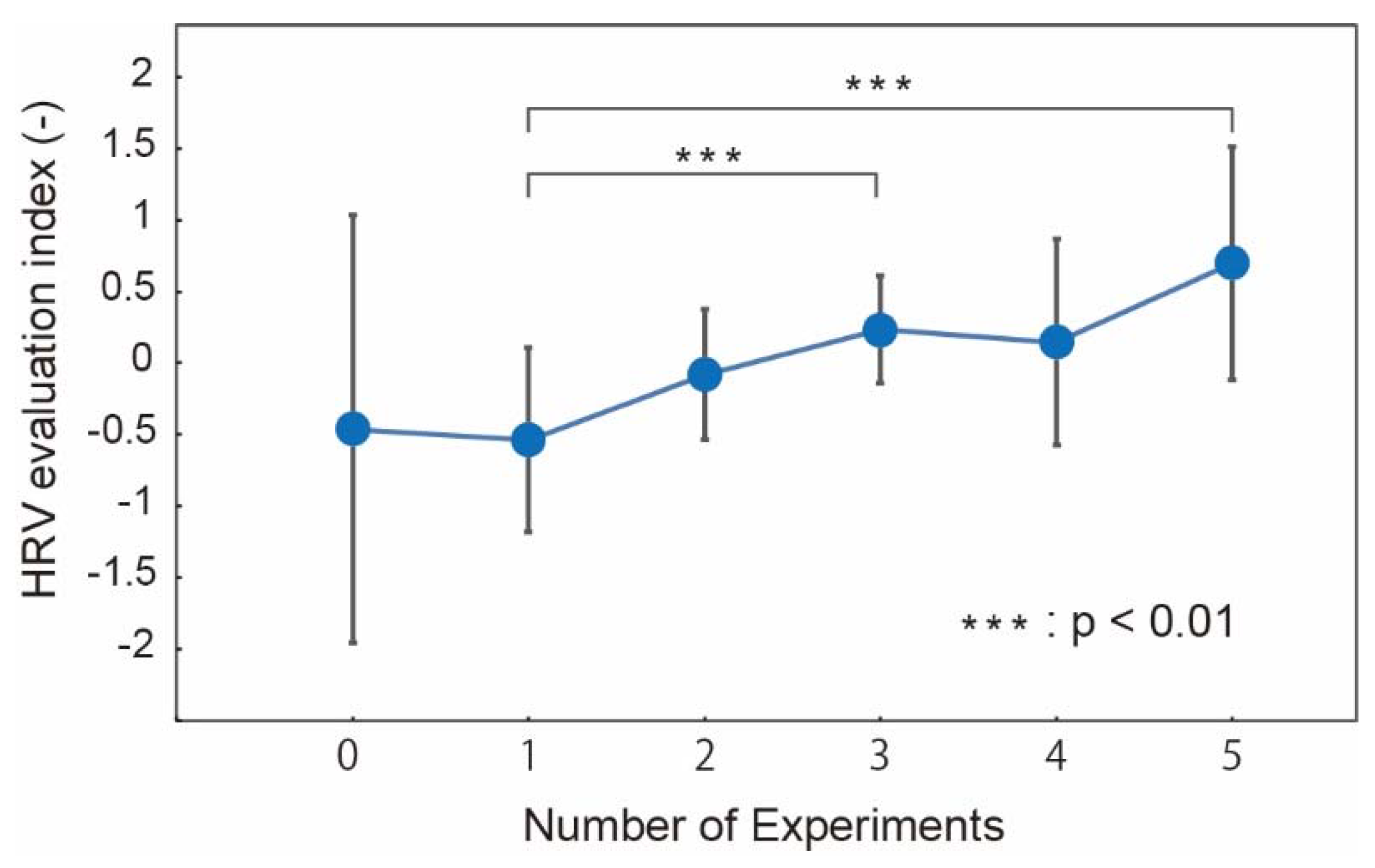
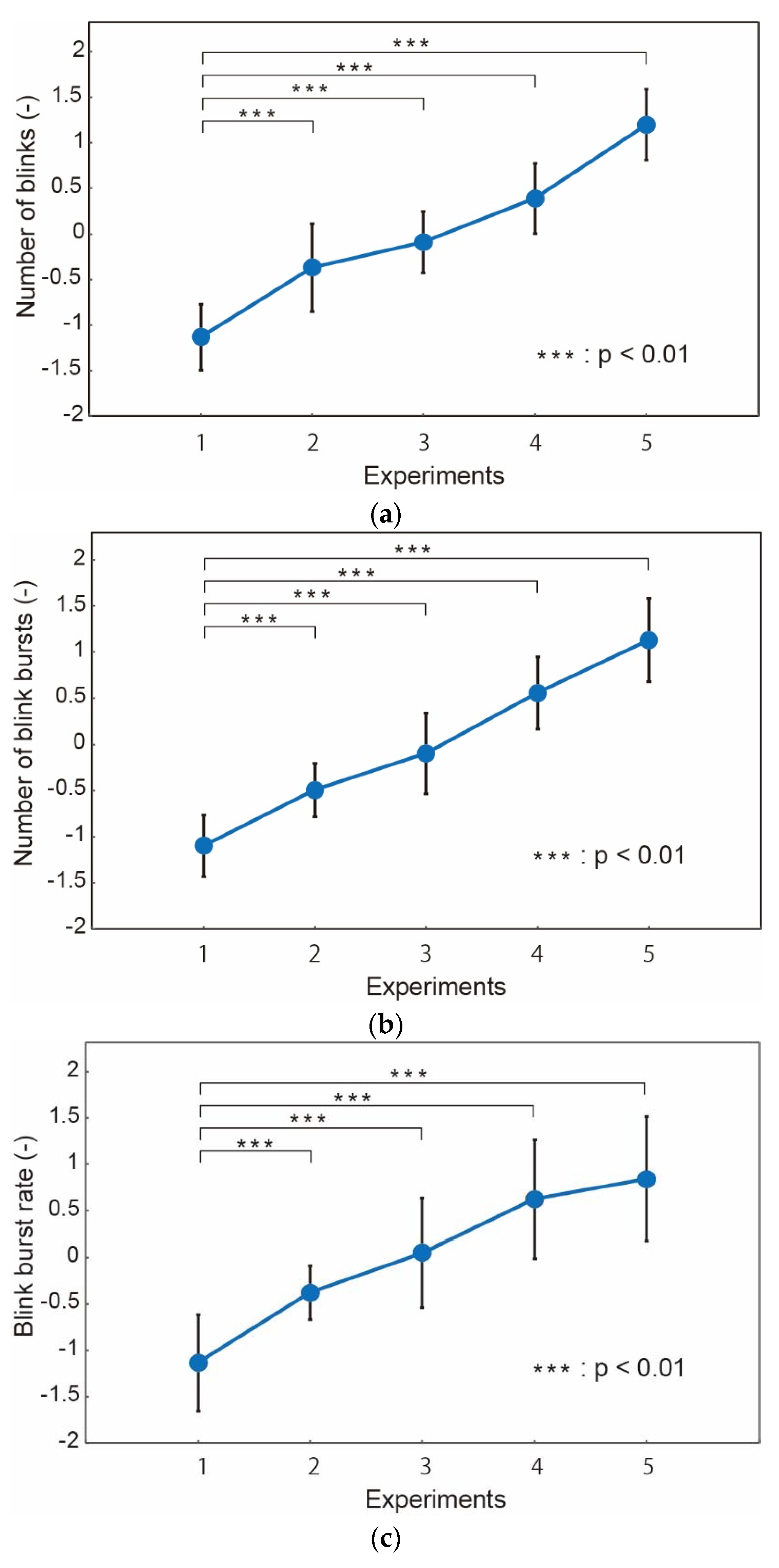
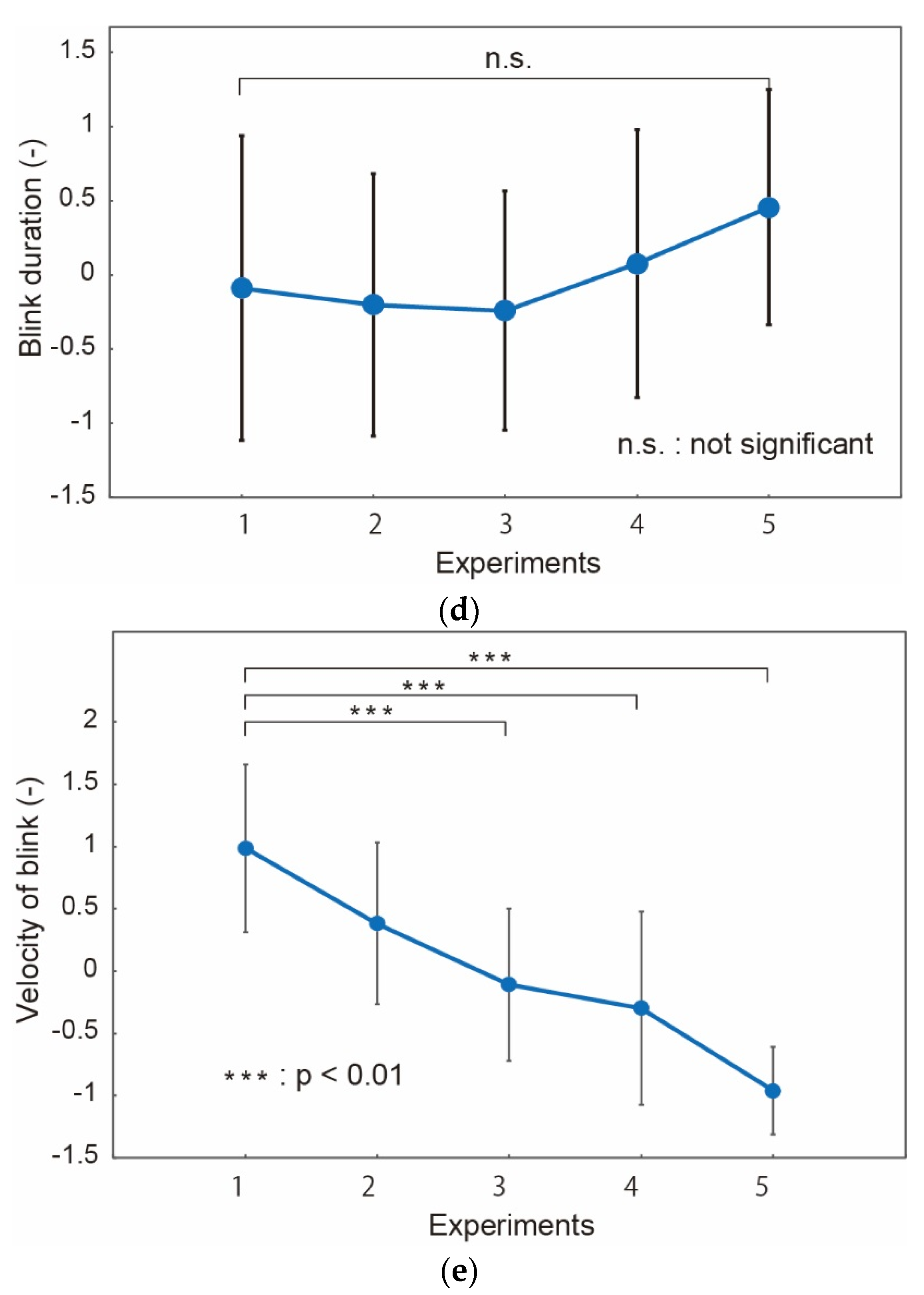
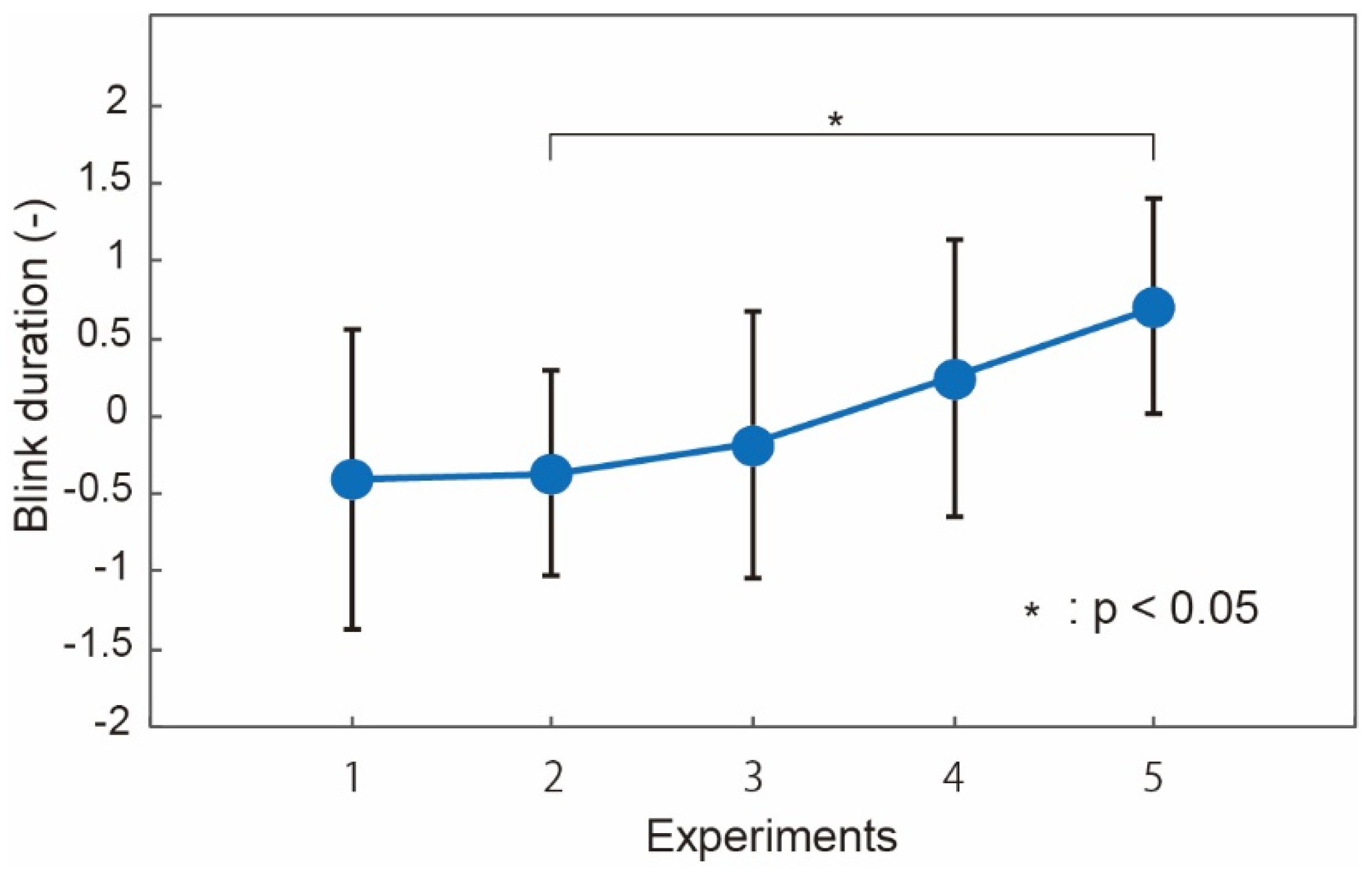
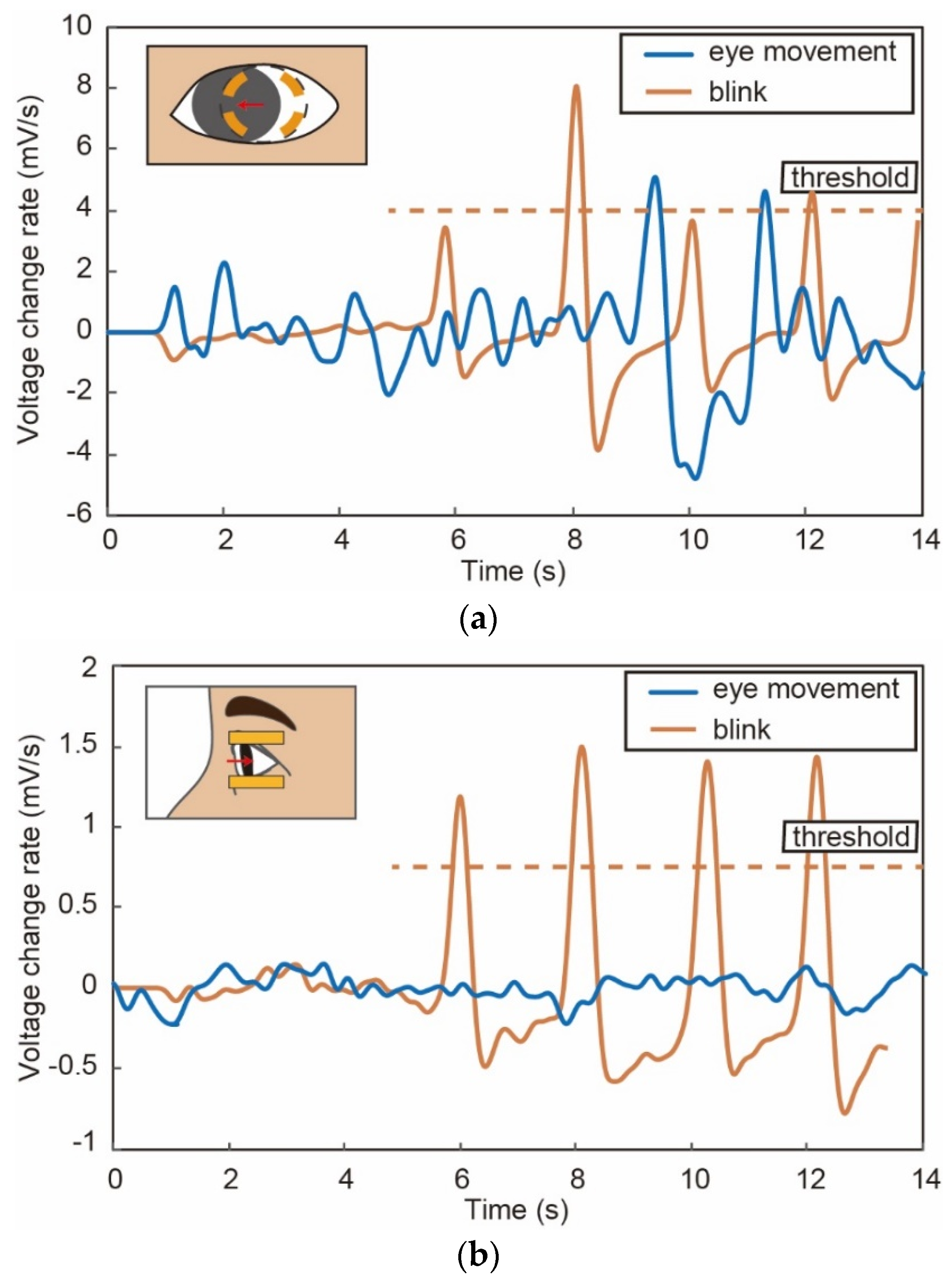
| Blink Detection Sensor | Number of Blinks | Number of Blink Bursts | Blink Bursts Rate | Blink Duration | Velocity of Blinks |
|---|---|---|---|---|---|
| Eyeglasses Type [15] | † | † | † | n.s. | -- |
| Smart Glass Type | **** | **** | **** | † | **** |
© 2018 by the authors. Licensee MDPI, Basel, Switzerland. This article is an open access article distributed under the terms and conditions of the Creative Commons Attribution (CC BY) license (http://creativecommons.org/licenses/by/4.0/).
Share and Cite
Horiuchi, R.; Ogasawara, T.; Miki, N. Fatigue Assessment by Blink Detected with Attachable Optical Sensors of Dye-Sensitized Photovoltaic Cells. Micromachines 2018, 9, 310. https://doi.org/10.3390/mi9060310
Horiuchi R, Ogasawara T, Miki N. Fatigue Assessment by Blink Detected with Attachable Optical Sensors of Dye-Sensitized Photovoltaic Cells. Micromachines. 2018; 9(6):310. https://doi.org/10.3390/mi9060310
Chicago/Turabian StyleHoriuchi, Ryogo, Tomohito Ogasawara, and Norihisa Miki. 2018. "Fatigue Assessment by Blink Detected with Attachable Optical Sensors of Dye-Sensitized Photovoltaic Cells" Micromachines 9, no. 6: 310. https://doi.org/10.3390/mi9060310





